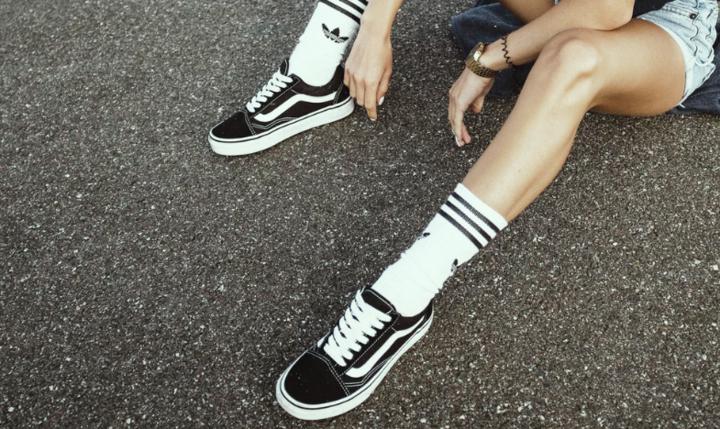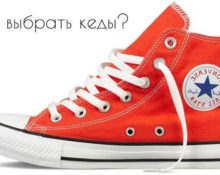Historically, sneakers were considered shoes for young people who lead an active lifestyle. Many people believe that people over 30 should pay more attention to their appearance, focus on a more formal style of clothing, and move away from teenage fashion. However, few people think that there is a more serious reason to refuse to wear sneakers - the harm they can cause to health.
The harm that is “hidden in sneakers”
What are sneakers? These are lace-up shoes made of woven materials with flat rubber soles. Already from such a description it becomes clear that they do not promise anything good for health even for young people.
Due to the design features, sneakers absolutely do not provide shock absorption when walking. The absence of a heel and arch support leads to the fact that the arch of the foot is deprived of any support. The body weight is distributed incorrectly, the legs hurt, the bones and joints of the foot are gradually deformed.
By the way! The path from leg problems to other parts of the skeleton is shorter than it might seem.

Why does the danger of wearing sneakers increase after 30?
With age, certain changes begin to occur in the human body. One such transitional moment is turning 30. People of this age, especially those leading a sedentary lifestyle, are prone to gaining excess weight.
An immediately unnoticeable pair of extra pounds significantly increases the load on your feet and requires wearing more comfortable shoes. This problem is aggravated by the general deterioration of the skeletal bones and muscle tissue. Joint problems caused by such shoes take longer to heal and more often lead to complications.. Even trained people who are actively involved in sports should be more attentive to their health status.

What diseases can such shoes provoke?
Sneakers were created for an active and active lifestyle. However, the imperfection of the materials used creates many problems.
The first of them lies on the surface - When constantly wearing such shoes in hot weather, active sports, the feet begin to sweat a lot. Excess moisture inside the boot leads to skin irritation and itching. If you are not very careful about hygiene, then the appearance of foot fungus is just a matter of time.
Another result of such exploitation is calluses and cornscausing discomfort and other problems.
Wearing rubber-soled shoes in winter also has consequences. Sneakers are not intended for use in the cold season, and their owner runs the risk of hypothermia, which, in turn, facilitates the development of respiratory infections such as ARVI or influenza. In addition, the rubber does not provide sufficient grip on ice or hard-packed snow.This leads to falls, bruises, fractures and other ways to get to a traumatologist.
In addition to seasonal diseases, there are other health problems caused by wearing such shoes. The absence of a heel leads to improper distribution of pressure on the foot. Overload on one side can cause curvature of the spine, poor posture, and the development of clubfoot.
Previously, it was quite common to believe that wearing sneakers causes flat feet. Now doctors say that this is not true, but flat soles still remain a serious health problem. Violation of the correct position of the foot also causes the development of arthritis and increases the risk of osteochondrosis. And these are just the most common diseases that are caused by wearing uncomfortable shoes.

What sneakers can you wear after 30?
The latest fashion trends allow wearing sports shoes even with dresses. In the end, style is a personal matter. But you need to approach the choice of sneakers wisely, and not according to the principle of “what you liked.”
Preference should be given to truly well-known brands. The difference in cost will definitely be compensated by the ease of wearing. The choice should be made in favor of natural materials - the less synthetics on your feet, the fewer problems with them.
Before purchasing, be sure to pay attention to the appearance of the shoes:
- The toe of the sneakers must be protected with a thick rubber pad. This will help protect your toes from unnecessary bruises.
- The sole should also be moderately hard and must have a clear pattern that will reduce slipping.
- Excessively soft material can cause one of the above problems.
- You should definitely try on both sneakers in the store.Feet may vary slightly in size or foot shape. Tight shoes cause problems with blood circulation.
A way to reduce the negative impact of such shoes on your feet is to use orthopedic insoles.. They compensate for the lack of a heel by redistributing the load on the legs. The insoles act as a shock absorber and allow the leg muscles to work naturally. At the same time, truly high-quality orthopedic insoles are made to individual measurements, taking into account the characteristics of a person’s feet.
Another mandatory condition will be adjustment of the shape and their position after a month of wear. Such modification increases their efficiency.
It remains a prerequisite careful shoe care. Insoles that have become unusable should be changed promptly - they are where most of the bacteria that cause skin lesions and fungal diseases settle. For these purposes, you can use special products sold in shoe stores. In addition, be sure to dry wet or sweaty shoes.
Sneakers should not be used for sports, it is better to leave them for walks or wear them for a short time. For jogging or other activities, you need to get sneakers that are adapted for increased loads.
Following simple rules and making wise choices will help you avoid many problems, even if it is impossible to give up wearing your favorite shoes.


 1
1





